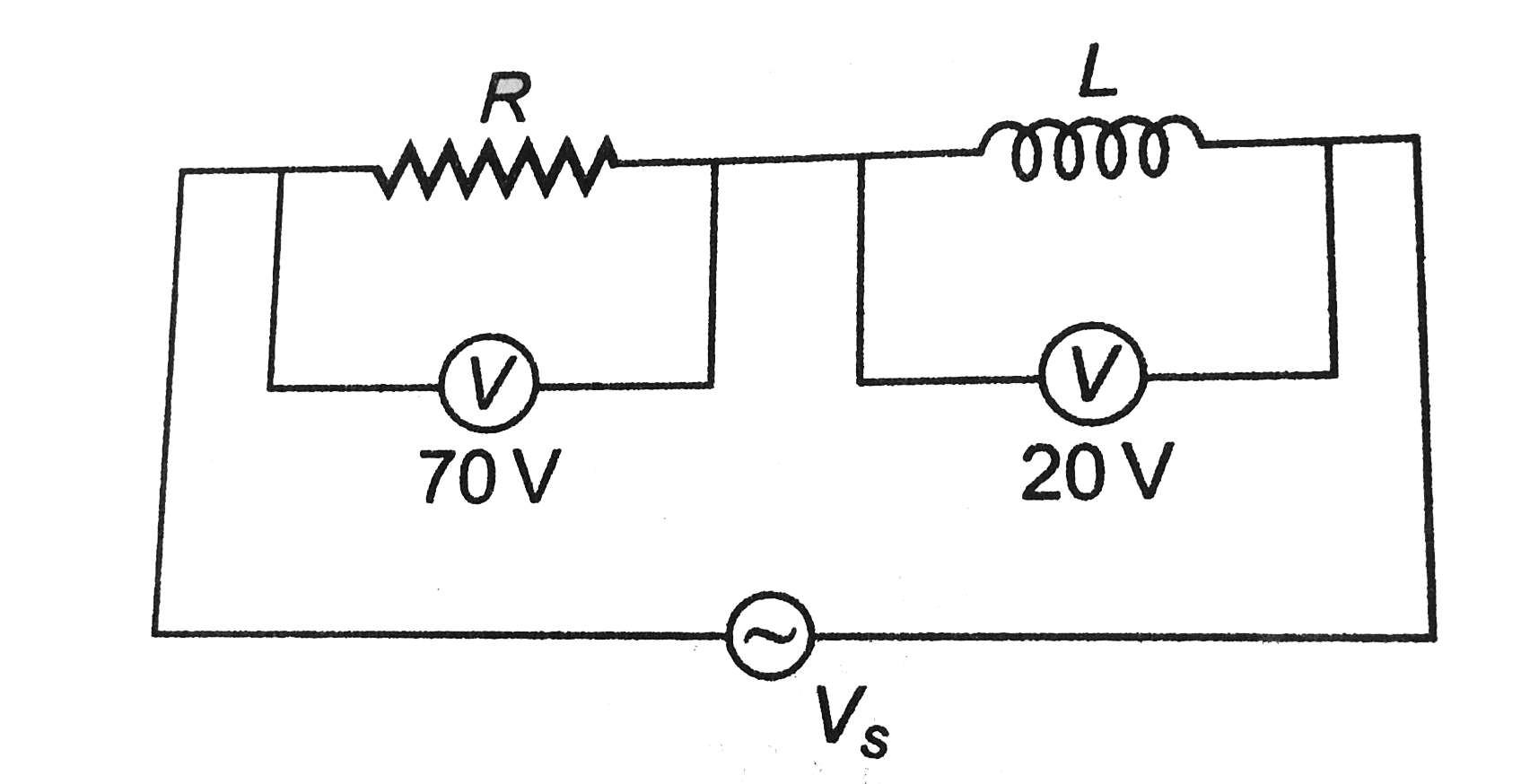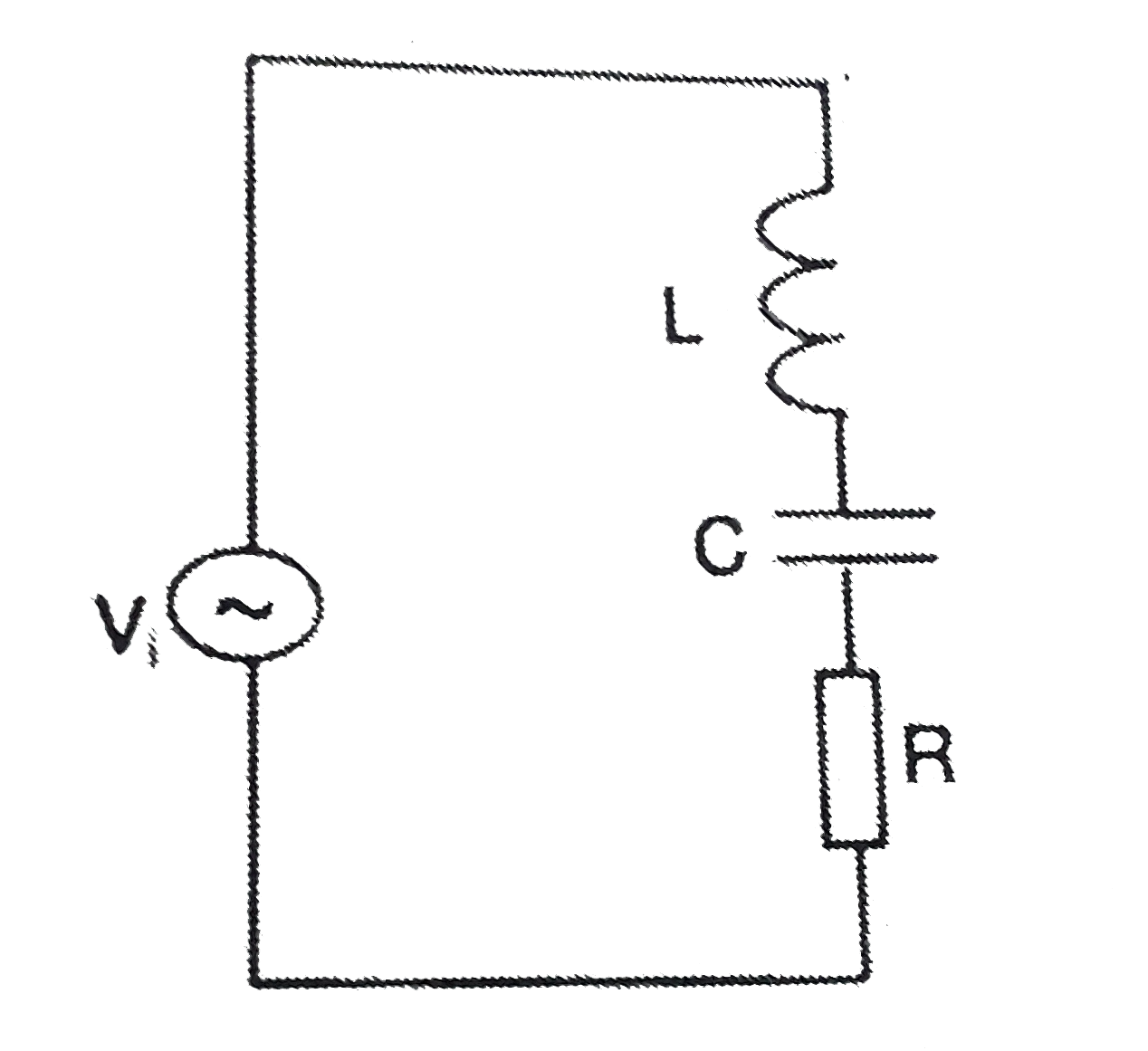In a circuit containing a capacitor and an AC source, the current is zero at the instant the source voltage is maximum. Is it consistent with Ohm's law?
To determine whether the situation described in the question is consistent with Ohm's law, we can analyze the behavior of the circuit containing a capacitor and an AC source.
1. Understanding the Circuit:
- The circuit consists of a capacitor connected to an AC source. In an AC circuit, the voltage and current vary sinusoidally with time.
2. Behavior of Capacitor in AC Circuit:
- In an AC circuit, the voltage across a capacitor lags the current by 90 degrees (or π/2 radians). This means that when the voltage is at its maximum, the current is at its minimum (which can be zero).
3. Instant of Maximum Voltage:
- At the instant when the source voltage is maximum, the capacitor is fully charged and there is no change in voltage across it. Therefore, the current through the capacitor is zero at this moment.
4. Ohm's Law Application:
- Ohm's law states that V=IR, where V is the voltage, I is the current, and R is the resistance. However, Ohm's law is applicable only in resistive circuits where the current and voltage are in phase.
- In the case of a capacitor, the relationship between voltage and current is not linear and does not follow Ohm's law because the current is not proportional to the voltage at all times.
5. Conclusion:
- Since the current is zero when the voltage is maximum in a capacitive circuit, this behavior is not consistent with Ohm's law. Therefore, the conclusion is that Ohm's law does not apply in this situation.
Final Answer:
The situation described is not consistent with Ohm's law because Ohm's law is only valid for resistive circuits, and in a circuit with a capacitor, the current can be zero when the voltage is at its maximum.
- The circuit consists of a capacitor connected to an AC source. In an AC circuit, the voltage and current vary sinusoidally with time.
- In an AC circuit, the voltage across a capacitor lags the current by 90 degrees (or π/2 radians). This means that when the voltage is at its maximum, the current is at its minimum (which can be zero).
- At the instant when the source voltage is maximum, the capacitor is fully charged and there is no change in voltage across it. Therefore, the current through the capacitor is zero at this moment.
- Ohm's law states that V=IR, where V is the voltage, I is the current, and R is the resistance. However, Ohm's law is applicable only in resistive circuits where the current and voltage are in phase.
- In the case of a capacitor, the relationship between voltage and current is not linear and does not follow Ohm's law because the current is not proportional to the voltage at all times.
- Since the current is zero when the voltage is maximum in a capacitive circuit, this behavior is not consistent with Ohm's law. Therefore, the conclusion is that Ohm's law does not apply in this situation.
The situation described is not consistent with Ohm's law because Ohm's law is only valid for resistive circuits, and in a circuit with a capacitor, the current can be zero when the voltage is at its maximum.
Topper's Solved these Questions
Similar Questions
In an AC series circuit, the instanctaneous current is zero when the instantaneous voltage is xamimum. Connected to the source may be a
View SolutionAn inductor-coil , a capacitor and an AC source of rms voltage 24V are connected in series. When the frequency of the source is varied, a maximum rms current of 6.0A is observed. If this inductor coil is connected to a battery of emf12V and internal resistance 4.0Ω, what will be the current?
View SolutionAn inductor coil joined to a 6V battery draws a steady current of 12A. This coil is connected to a capacitor and an AC source of rms voltage 6V in series. If the current in the circuit is in phase with the emf, find the rms current.
View SolutionA coil a capacitor and an AC source of rms voltage 24V are connected in series. By varying the frequency of the source, a maximum rms current of 6 A is observed. If coil is connected is at DC batteryof emf 12 volt and internal resistance 4Ω, then current through it in steady state is
View SolutionA coil a capacitor and an AC source of rms voltage 24V are connected in series. By varying the frequency of the source, a maximum rms current of 6 A is observed. If coil is connected is at DC batteryof emf 12 volt and internal resistance 4Ω, then current through it in steady state is
View SolutionA coil a capacitor and an AC source of rms voltage 24V are connected in series. By varying the frequency of the source, a maximum rms current of 6 A is observed. If coil is connected is at DC batteryof emf 12 volt and internal resistance 4Ω, then current through it in steady state is
View SolutionAn AC circuit consists of an inductor of inductance 0.5H and a capacitor of capacitance 8μF in series. The current in the circuit is maximum when the angular frequency of AC source is
View SolutionThe adjoining figure shows an AC circuit with resistane R, inductance L and source voltage VS. Then
 View Solution
View SolutionIn the following circuit the current is in phase with the applied voltage. Therefore, the current in the circuit and the frequency of the source voltage respectively, are
 View Solution
View SolutionAn inductor (L=2000mH) is connected to an AC source of peak current. What is the instantaneous voltage of the source when the current is at its peak value?
View Solution

